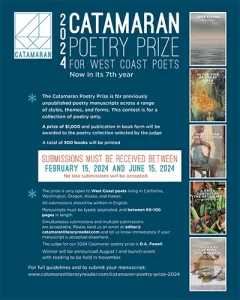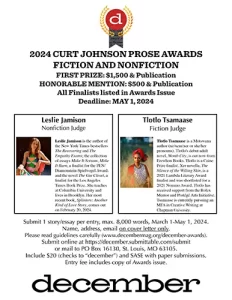Columbia Poetry Review – 2011
Number 24
2011
Annual
Bracha Goykadosh
Re-reading through Columbia Poetry Review (read first for the pure pleasure of reading, and second for reviewing), I noticed that I had dog-eared a third of the pages of the journal. Why have I marked all of these poems? I wondered. Were they all really that good?
Re-reading through Columbia Poetry Review (read first for the pure pleasure of reading, and second for reviewing), I noticed that I had dog-eared a third of the pages of the journal. Why have I marked all of these poems? I wondered. Were they all really that good?
Judging by the names on the back cover of the journal, yes, they should all really be that good. D.A. Powell, Dean Young and Amy Gerstler, to name a few. Literati, rejoice! However, we are all taught as young children not to judge books by their covers, or even the words on their covers. This venture should be no exception—let us take a look inside.
Leif Haven’s terrifically funny and engaging poem, “Joy Division All the Time,” enumerates the speaker’s job “as a bell hop, inn keeper, valet and room service at this bed and breakfast where rooms were four hundred plus a night.” His conversational tone and seemingly mundane subject matter (his job, his haircut, folding laundry) evoke Frank O’Hara. Unlike O’Hara, however, Haven does not provide pithy little stanzas, but instead meditates on juicier, longer paragraphs, such as: “I was half drunk on stolen wine pushing / somebody else’s hundred thousand dollar car that I didn’t own into the street but by God I / got it down there. I don’t remember if the owners got the feather boa or not, but I’m pretty / sure they still tipped.”
Haven’s poem presents a rarity in the world of imagery, metaphor, assonance, and alliteration: character. That is, instead of the speaker being a loud voice through which images and flits of thoughts can be conveyed, the speaker is a tangible and audible figure. Which is not to say the poem becomes a work of fiction, as some of you might like to argue. By creating a strong character presence in his poem, Haven successfully conveys all those poetic treats MFA professors squeal gleefully over: metaphor, depth, lyric, etc.
The range of poetry is laudable. Paula Bohince’s elegant “The Oak” is completely different, style-wise, compared to Haven’s poem. A tight, beautiful construction:
The oak sags
with yellow ribbon,
mice burrowed
in its hold
sleep
on siblings,
fold
as infant clothes do
in a bureau.
Bohince has effectively de-familiarized her readers. Comparing the mice in an oak to infant clothes in a bureau introduces a layer of gentle purity and softness. By exquisitely juxtaposing these two images, Bohince’s poem transforms a scene to a story.
One thing I am always concerned about as a reader of poetry is accessibility. That is, are the poems readable, or do the poets indulge in too much witty wordplay, invoke obscure muses, and/or rant? Perhaps I dog-eared so many poems in Columbia Poetry Review because, while the poems refrain from density and pretentiousness, they are all engaging and intelligent.
[www.colum.edu/columbiapoetryreview]




